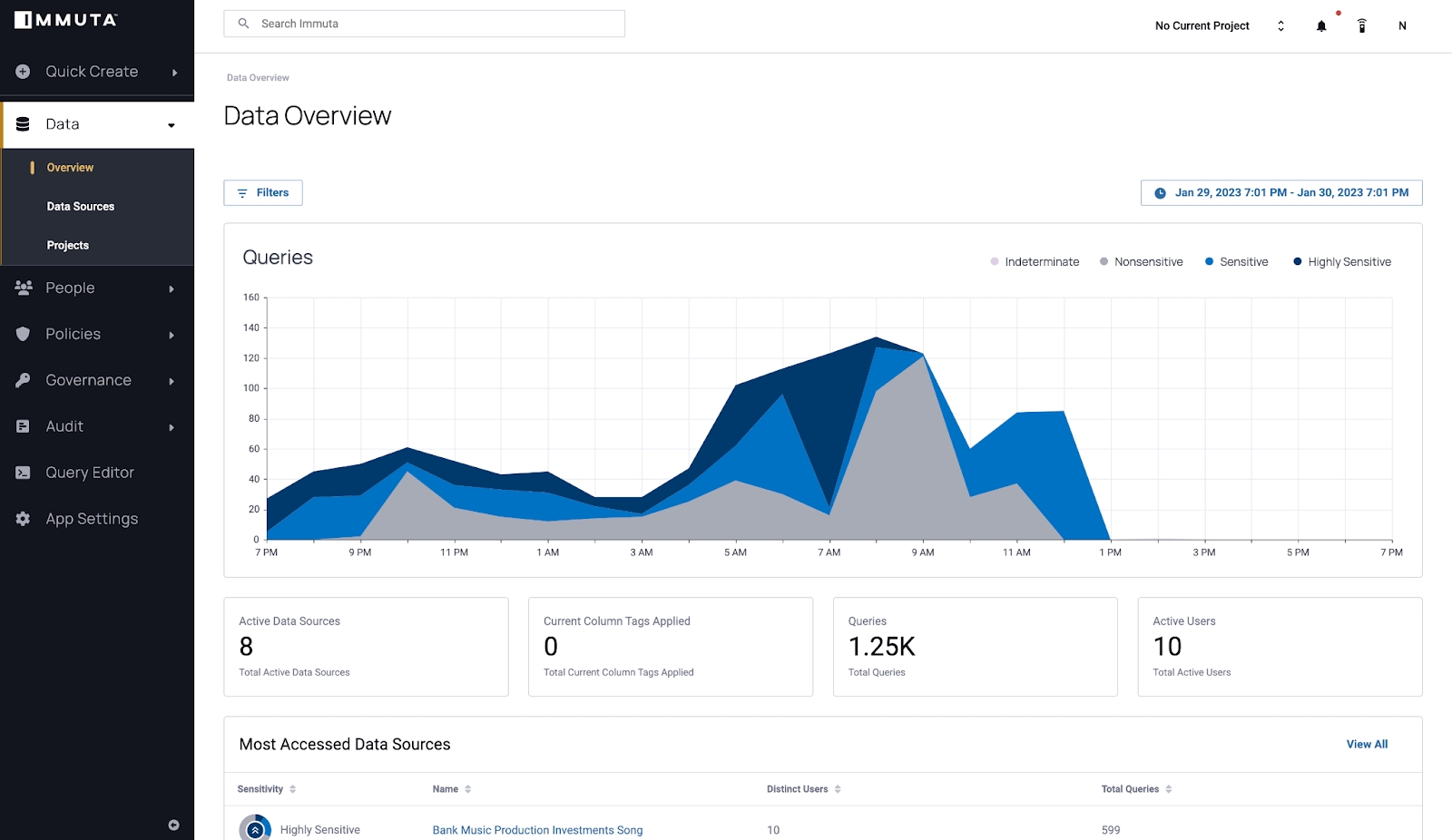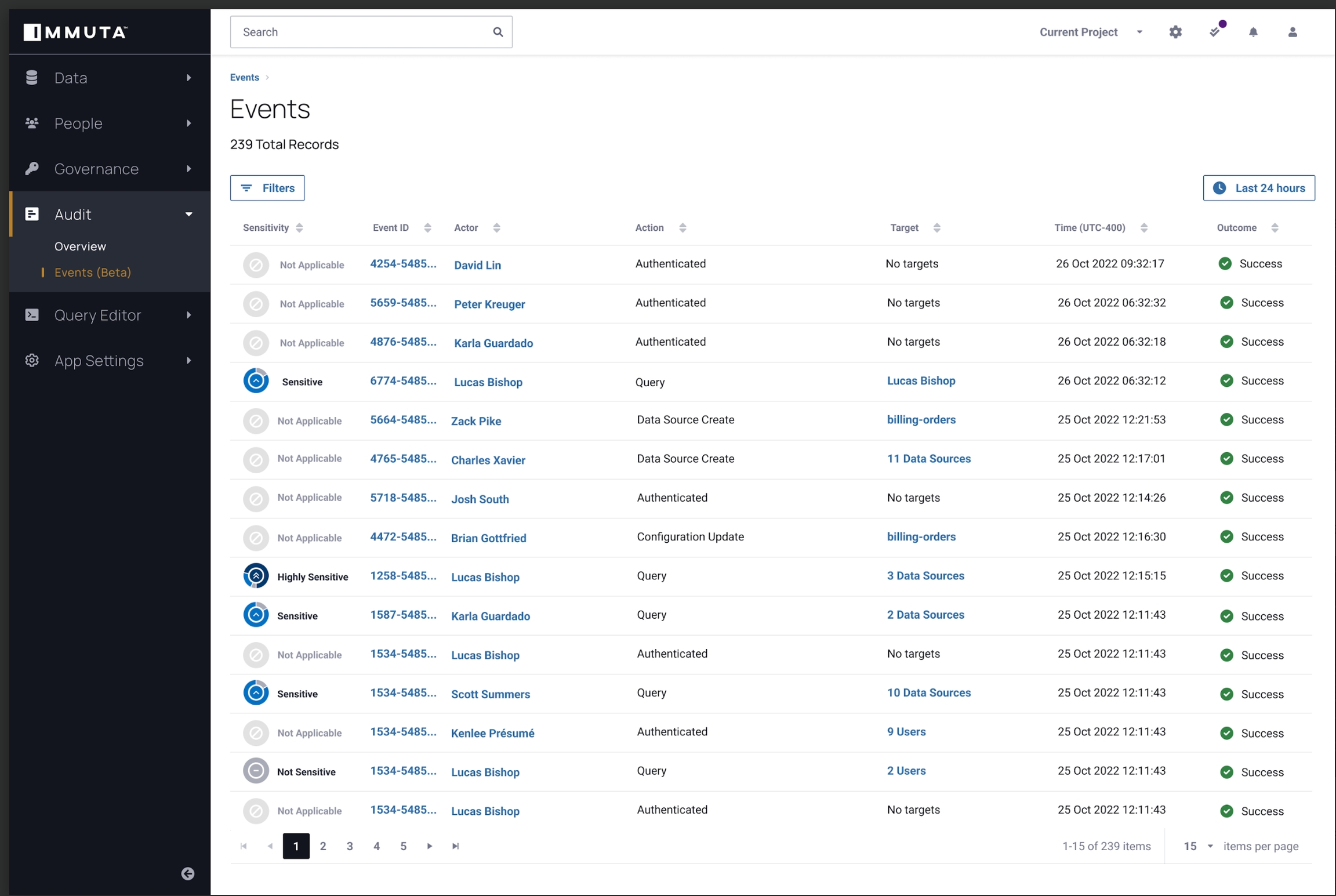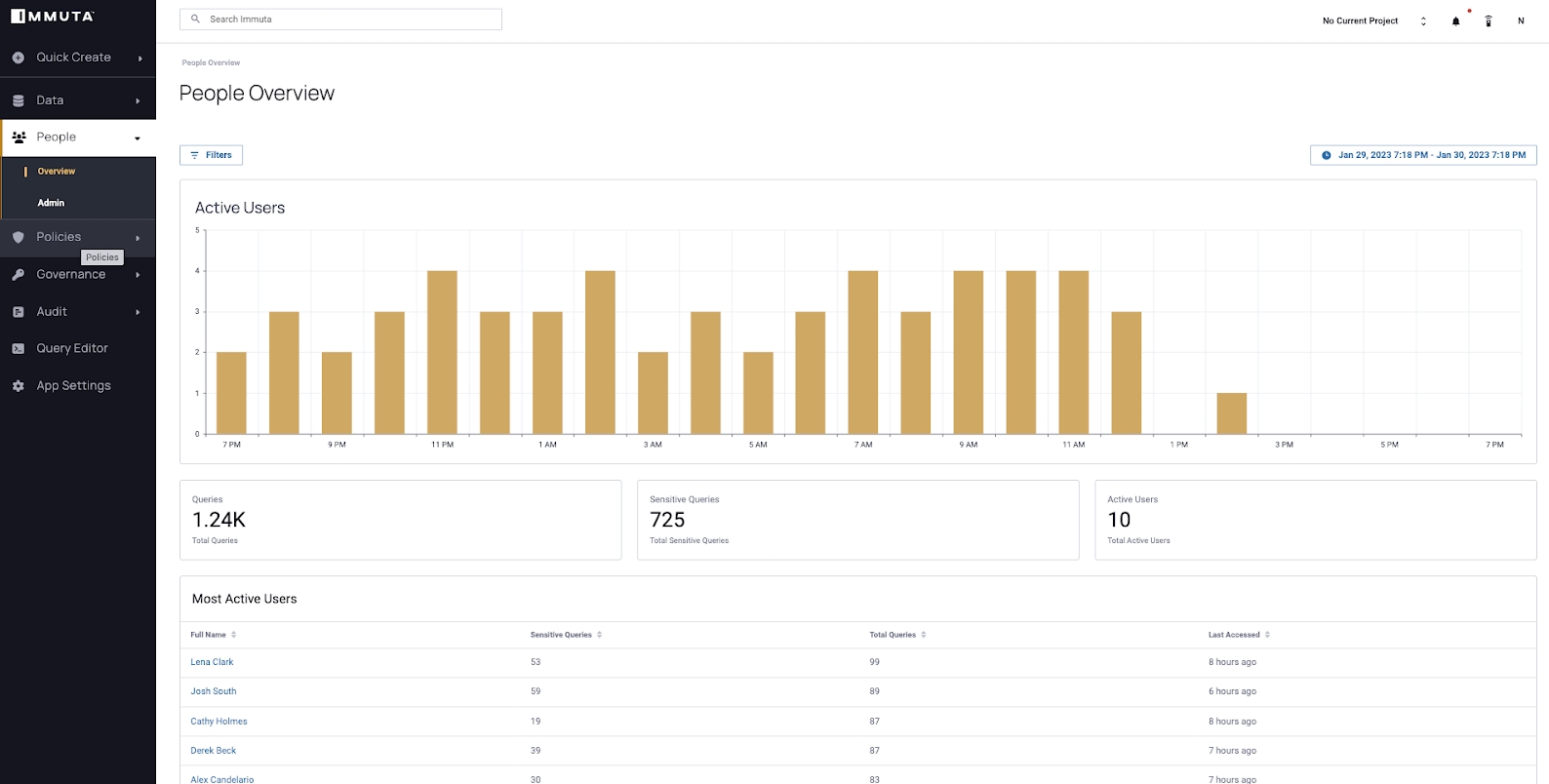Audit Dashboards Reference Guide
Immuta monitors your data environment and provides analytic dashboards in the Immuta UI based on your data use. These audit dashboards offer visualizations of audit events, including user queries and when classification is enabled, the sensitivity of those queries, data sources, and columns. It can work within your current Immuta integration.
Immuta continually monitors your data environment to help answer questions about your most active data users, the most accessed data, and the events happening within your data environment. Audit dashboards can provide even more value with classification enabled to answer questions about the sensitive data accessed by your users and the tables that contain sensitive data. Because of this information, your organization can do the following:
Meet compliance requirements more effectively
Quickly decide what data access is allowed for what purposes
Reduce the effort and time to respond to auditors about data access in your company
Reduce the effort of classifying data within the scope of security or regulatory compliance frameworks

Audit dashboards with classification
Benefits
Dashboards with data activity patterns for data sources and users
Dynamic query sensitivity on joined tables calculate sensitivity based on the columns queried and their toxicity when joined
Dashboards to help users find the most recently accessed data sources and active columns
Architecture
Immuta uses several features to create user-friendly dashboards that are always available in the UI and do not need to be generated like Immuta reports. These dashboards are created by combining Snowflake audit events from registered users and the sensitivity of your data. Audit information and events are gathered from the Snowflake ACCOUNT_USAGE views into the audit dashboards. Additionally, Immuta calculates the sensitivity of your data using classification frameworks, which find sensitive data on a column-by-column basis using tags applied by identification. Once Immuta does this work behind the scenes, users with the AUDIT permission will see dashboards that show the sensitive data within your organization’s data environment and what users are accessing that data.
Sensitivity

With classification enabled, Immuta qualifies both columns and queries as the following sensitivity types in the dashboards:
Highly sensitive: Includes data that can cause severe harm or loss with inappropriate access or misuse.
Sensitive: Includes personal data and data that could cause harm or loss with inappropriate access or misuse.
Non-sensitive: Includes publicly available information or data that would not typically cause harm or loss if disclosed.
Indeterminate: The sensitivity of the data is unknown. Immuta deems sensitivity indeterminate because of an error in the query or because the identification or classification has not completed processing at the time the query was run.
How does Immuta determine column sensitivity?
Column sensitivity is determined by the classification tags applied to the columns by the frameworks. The classification tags contain sensitivity metadata.
How does Immuta determine query sensitivity?
For queries that read from a single table, query sensitivity is determined by the column with the highest sensitivity in the query
For a query that joins tables, Immuta uses the same classification rules applied to tables and applies those rules to columns of the query. Immuta applies a new set of classification tags to the query columns and calculates sensitivity for the query event in the audit record. These query classification tags are not included on the tables' data dictionary.
Audit dashboards without classification
Benefits
Quicker and easier onboarding experience
Dashboards with data activity patterns for data sources and users
Dashboards to help users find the most recently accessed data sources and active columns
Architecture
Immuta uses several features to create user-friendly dashboards that are always available in the UI and do not need to be generated like Immuta reports. These dashboards are created from audit information and events gathered from Snowflake, Databricks Spark, and Databricks Unity Catalog into Immuta. Immuta pulls audit information from Snowflake and Databricks Spark for data sources and users registered in Immuta; for Databricks Unity Catalog, Immuta pulls in audit information for all users and tables. Users with the AUDIT permission will see dashboards that show the data events within your organization’s data environment and what users are accessing that data.
Dashboard views

Several dashboards are available to help you find the information you need which can be filtered or set to a specific date range by the viewer. Users with the AUDIT permission, Audit Activity permission, or a data owner can see the dashboards.
Data-centric views: These dashboards provide information on how your data sources are being queried.
Activity summary of all data sources found on the main Data Overview tab.
Activity summary by data source found on each data source's Data Overview tab.
Audit views: These dashboards present your audit logs in an organized table.
Immuta activity audit found on the Audit tab.
Detailed audit event found by selecting an event ID from the Audit page.
User-centric views: These dashboards provide information about your Immuta users.
Activity summary of all users found on the main People tab.
Activity summary by user found by selecting a user's name from the People page.
Limitations
The audit dashboard shows near real-time events for Immuta events, such as login, policy changes, and data platform policy changes. Query events are ingested from Snowflake and Databricks once a day, but you can manually trigger an immediate query retrieval by using the ↻Load Audit Events button on the Audit page. To update your automatic query retrieval, edit your integration.
The most recent query history that is available to Immuta depends on the underlying data platform latency. For example, there is up to three hours of latency between an executed query and recording the event on the Snowflake data platform side.
Immuta does not support Databricks Spark and Databricks Unity Catalog for classification to determine query sensitivity at this time.
Last updated
Was this helpful?

